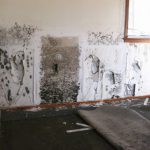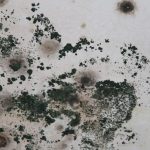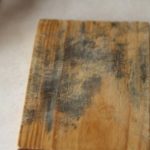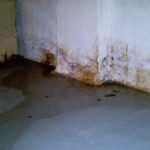Molds can grow anywhere such as bathroom, kitchen, and even on fabrics (clothes and bedding set). The annoying fact is this fungus can return easily after the removal, especially if you do not do a regular and thorough treatment.
In the house, following are the common places where molds grow and spread.
- Bathroom. You use this place every day. Because of the water, this area becomes damp almost all the time. This condition will support the molds to live. In a bathroom, you may find molds in the corner part, under of a bathtub, or on the tiles line.
- In the kitchen area. There are lots of reasons why molds can live in the kitchen. It can be the increasing humidity of the steam of boiling water, water leak or splash from a sink, and leftover foods.
- Windows frame. Windows often get damp because of the rain. If you forget to keep it clean, molds will start to live there. Frames that made of wood may invite the molds more than other materials.
- Furniture and other equipment. After all of those noticeable areas, you need to check the hidden spots like behind a painting or wardrobe. Do not forget to clean the other equipment, households, or utensils like a stove, refrigerator, dishes, and trash bin.
To deal with this problem, many manufacturers present some products to overcome this problem. One of the products is Lysol. Does Lysol kill mold? There are many users claim that Lysol is effective in killing the mold. For more information, the following is the explanation about the Lysol, how to use it, and the comparison with another brand.
Besides the branded one, there are several products that you use to remove molds, and they are bleach, borax, vinegar, ammonia, hydrogen peroxide, detergent, baking soda, tea tree oil, and grapefruit seed extract. Some of them may be impropriating to your skin, so it is better to wear proper equipment when you are applying them.
Is Lysol good for mold?
Lysol is a disinfectant spray which can kill 99.9% of the viruses and bacteria on a hard and soft surface like floor, doorknob, sinks, and toilets. For the soft surface like clothes or bedding, you can choose a gentler product.
Lysol has some functions, and they are as a disinfectant, sanitation, and deodorant.
- Disinfectant: Disinfectants are antimicrobial agents that are applied to the non-living object to eliminate microorganisms. Lysol will help in destroying some bacteria, viruses, and fungi.
- Sanitation: According to WHO, the word sanitation may refer to the maintenance of hygienic conditions.
- Deodorant: It is a substance that responsible for the odor problem. Lysol will control and prevent the odor of the mold and mildew.
On the official website, you can see that Lysol can eliminate various types of fungi, bacteria, and viruses as follows
- Bacteria: They are Staphylococcus aureus (Staph), Methicillin-Resistant Staphylococcus aureus (MRSA), Streptococcus pyogenes (Strep), Escherichia coli O157 H7 (E. coli), Salmonella enteric (Salmonella), Campylobacter jejuni, and Klebsiella pneumoniae.
- Viruses: They are Avian influenza (H1N1), Influenza A virus (New Caledonia/20/99) and B Virus (Strain B/Hong Kong/5/72), Rhinovirus or the leading cause of common cold, Rotavirus or the cause of infectious diarrhea that happens to children, and Respiratory Syncytial Virus (RSV) or the main cause of the lower respiratory infection that happens to children.
- Fungi: They are mold, mildew, and Trichophyton mentragophytes (Athlete’s Foot Fungus).
By following the right direction, you can get an optimal result.
How to kill mold with Lysol?
To remove the mold and mildew, you can follow the steps below
- Spray the product on the contacted surface;
- Let it set for 10 minutes;
- After that, wipe off the objects using sponge or paper towel.
- Do not forget to ventilate the room while cleaning it by turning on the fan or opening the door or window.
Which is better, Clorox or Lysol?
Both Clorox and Lysol are intended to remove the disturbing fungi, molds. Some users claim that these two brands are the same, but others claim that they prefer to use Lysol (or Clorox) because of some reasons. The factors they see include
- Function: Both of them meet the function as disinfectant and sanitizer. So, they are suitable to remove the molds and mildew which have microorganism and viruses.
- Performance: Lysol needs 10 minutes to disinfect, while Clorox is only 4 minutes.
- Chemical substance: Most of the products of these brands contain bleach, so make sure to wear gloves when you are applying them. The bleach can cause skin irritation. Among the products that contain bleach, some users said that Lysol has more bleach-free options. And this fact makes Lysol suitable for a soft object like cloth.
Repeating the main question here that does Lysol kill mold. And the answer is yes. As long as you follow the proper direction of how to use it, this product is effective in removing molds and eliminating the odor in the air.
Additionally, if you complete the action with a daily maintenance, you could even prevent the life cycle of molds.






